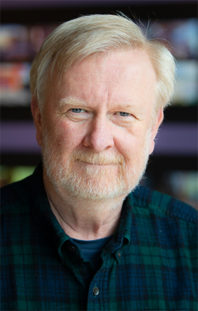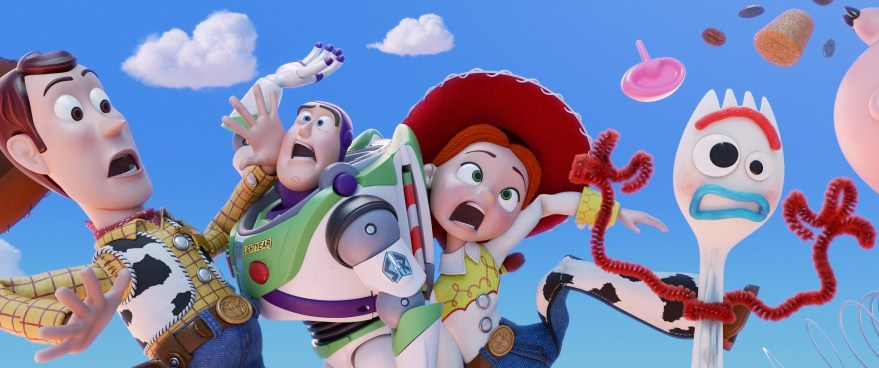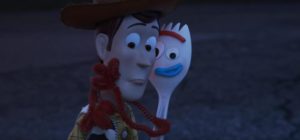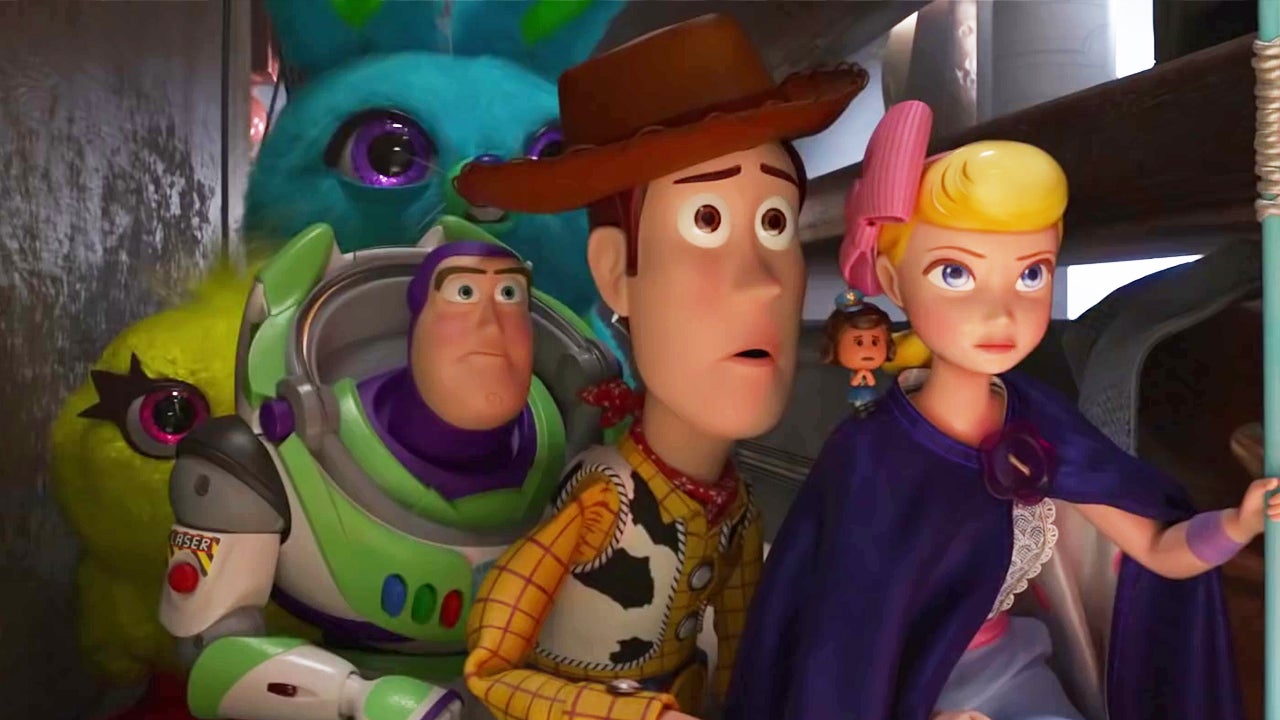
There’s a next level of creativity and problem solving that is required to really get some of these projects off the ground.
On so many different levels, a film like Toy Story 4 is truly the next stage in filmmaking because while it not only requires such creative and storytelling prowess in order to get these images to the screen they also require an unbelievable amount of technical knowhow in order to become reality. That’s where a guy like William (Bill) Reeves comes in.
A home grown talent who studied at the University of Waterloo as well as the University of Toronto; Bill is a Supervising technical director at Pixar Animation Studios and has invented a new image synthesis technique called Particle Systems that has been used to model fire, fireworks, trees, grass and flowers. It was used in the feature film Star Trek II: The Wrath of Khan. Most recently, Bill served as Supervising Technical Director and Global Technology Supervisor on Pixar’s, Toy Story 4. He has received an Academy Award for best Animated short film for his work as a technical director on Tin Toy. He has since been involved in Academy Award®-winning movie Finding Nemo, Oscar® winners Ratatouille, Toy Story 3 and Inside Out. Reeves continues to contribute to the advancement of computer graphics and interactive techniques.
With Toy Story 4 available from all major retailers right now in most formats we got the chance to talk to Bill to explore a little bit of the creativity that’s required from the technical side that people don’t always think about which are so vital in making these movies tick.
Dave Voigt: Obviously congratulations because particularly here on Toy Story 4 I was just so blown away with the opening scene in the film with the rescue of RV and how realistic the rain and the grass and things like that looked. The more I did my research the more I was really fascinated at the whole process of how you succeed in making these kinds of visuals. Can you walk us through the level of creativity that is needed from technical side to make it all look as amazing as it does?
Bill Reeves: Oh it’s a complicated beast to be sure, I mean in the beginning of Toy Story 4 originally was just a very kind of generic playing with my toys kind of dream sequence, then after a couple of re-writes all hell broke loose as we has this torrential rain and maelstrom to deal with which we dove into head first and too be honest as much as we always groan and moan about the process sometimes, it’s these kind of challenges which really make it fun and keep us engaged in the entire process. We find ourselves having to push ourselves beyond any place that we’ve been before and while we’ve obviously done rain storms in the past in other films but this time we really found the toys truly immersed in the weather that we we’re hitting them with. We were really focused on making it as threatening as we could because at their scale, a raindrop can be something pretty darn big and impactful.
We had to do some really up close research to see how rain moves and what ultimately makes it tick from a motion standpoint. Obviously there’s a difference between you or I standing outside in a rainstorm and cinematic rain, particularly on the scale that these characters exist. You have to be very specific about what it’s doing and how much there is and you have to figure out all those variables. It’s a bunch physics, it’s a bunch of simulation, and its research into the look and feel of it all. It certainly gets really complicated because I think there was over 100 shots in the opening sequence that all needed the rain so it’s a significant amount of work that you have to put in to make it look exactly like you want it too. Plus the rainstorm was such an emotional component to set the stage for Bo leaving with that great scene between her and Woody and just having it in the background really set the tone for that scene and really the entire film.
As creative as people can be, there’s always got to be a certain degree of balance and I’m curious; how do you navigate the dichotomy between what you’d LIKE to do…and what’s technically possible.
Yeah there certainly is, between the people at our disposal, the limits of the technology and the good old fashion time that we have to do it in certainly makes for some interesting challenges. Plus we’ve had the benefit of being able to iron out quite a few of those potential wrinkles through years of doing. We’re hardly perfect by any stretch but the more you do this job the more you get a feel for it all. The story team goes off on their own and does what they do (like the rain storm in the beginning) that’s their job, to make the story better. Our job is to respond to that in as effective but also in as creative of a way as humanly possible.
Sure there was a small team tasked with creating something like the rainstorm, but throughout the entire process they’d be showing it to the entire team. Not just the director and people on the story side as well but the technical side as well, because animating it is one thing, but you also have to light the rain, shape it and make your characters interact with it on some pretty subtle levels which just makes for so many different aspects that are connected to the rainstorm.
We all have to work together, not only to show our progress through various departments but to make sure we all put our efforts where needed if something in the sequence that we are crafting needs a little extra help along the way. Not to mention to stay within the timeframe and the budget all of which are important parts of the overall game.

How technology and the evolution of it all changed your job? I’ve got to imagine that there we’re things you all managed to pull off on Toy Story 4 that would have just been impossible on the first Toy Story installment.
Oh without question. Just the differences in raw rendering power that are afforded us now is really staggering, not mention much more cost effective and physically compact then it all used to be not to mention the slew of software that has been written over the years which makes it all so much easier.
While our toolbox has certainly gotten bigger that time crunch that we live under while developing these films is still a very real thing. We keep getting challenged to do bigger and better things and we want to challenge ourselves as well because for us that’s really where the creative satisfaction comes; not just with the final product and our desire to keep the audience engaged but also in those impossible problems we ultimately overcome almost every step of the way. It’s a real challenge as we want to innovate and live up to the previous installments all at the same time.
It can be scary and I even know that our director Josh Cooley felt the pressure of taking on the lineage of the Toy Story franchise, but he was open about it and looked to us for guidance along the way and I think that he did a really great job.
The technology has changed so much too, just allowing us to really up the visual eye candy factor, especially in shots in the Antique store. Being able to model, detail and shade all that just would not have been possible back in the good old days. Especially with the new rendering software which does Global Illumination where you feed in the geometrical and physical characteristics of an object you are trying to create then when you put light into the scene, the new rendering software really figures out quite a bit for you. With all the reflections and refractions that can happen naturally, this software is bouncing light and mimics those physics of light transport. In the past we could see light ‘in camera’ but now this allows us to see beyond that and really get a sense of all those subtle interactions that light can have with an object. In previous years we’d have to put those things in ourselves, but now the software can generate them for us. It allows us to focus more on the filmmaking as it takes care of some of the more fundamental computer graphics issues for us, in essence we get things like ‘shadows’ for free now and actually have to take some out if we get too many! (Laughs)
That really does fascinate because as you say, over the years the ‘toolbox’ has gotten bigger but this is also an industry where sometimes you have to invent the actual tool! For you is that where the real creative satisfaction comes out in this process, in being confronted with a problem and being able to almost reinvent the rules where you need in order to ultimately find a solution?
Yeah, I’d say that’s a pretty big part of it all. Figuring out how to make all this activity work the best way possible, deal with any compromises or trade off’s you might have along the way. Plus, even when you look at another movie I worked on; Inside Out and you’re faced with the problem of actualizing what these emotions will look like in a little girls mind. Sure you’re working hand in hand with the art department but also you really have to embrace the idea that you’re building a universe with its own laws and figuring out ways to make all that work is really challenging and really really fun. It’s why we come to work every day.
Toy Story 4 is available on 4K, Blu-Ray, Digital and DVD now at all major retailers.

